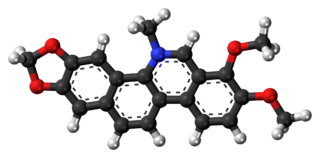Antimalarial medications or simply antimalarials are a type of antiparasitic chemical agent, often naturally derived, that can be used to treat or to prevent malaria, in the latter case, most often aiming at two susceptible target groups, young children and pregnant women. As of 2018, modern treatments, including for severe malaria, continued to depend on therapies deriving historically from quinine and artesunate, both parenteral (injectable) drugs, expanding from there into the many classes of available modern drugs. Incidence and distribution of the disease is expected to remain high, globally, for many years to come; moreover, known antimalarial drugs have repeatedly been observed to elicit resistance in the malaria parasite—including for combination therapies featuring artemisinin, a drug of last resort, where resistance has now been observed in Southeast Asia. As such, the needs for new antimalarial agents and new strategies of treatment remain important priorities in tropical medicine. As well, despite very positive outcomes from many modern treatments, serious side effects can impact some individuals taking standard doses.

Zanthoxylum is a genus of about 250 species of deciduous and evergreen trees, shrubs and climbers in the family Rutaceae that are native to warm temperate and subtropical areas worldwide. It is the type genus of the tribe Zanthoxyleae in the subfamily Rutoideae. Several of the species have yellow heartwood, to which their generic name alludes. Several species are cultivated for their use as spices, notably including Sichuan pepper.

Zanthoxylum clava-herculis, the Hercules' club, Hercules-club, pepperwood, or southern prickly ash, is a spiny tree or shrub native to the southeastern United States. It grows to 10–17 m tall and has distinctive spined thick, corky lumps 2–3 cm long on the bark. The leaves are glabrous and leathery, pinnately compound, 20–30 cm long with 7-19 leaflets, each leaflet 4–5 cm long. The flowers are dioecious, in panicles up to 20 cm long, each flower small, 6–8 mm diameter, with 3-5 white petals. The fruit is a two-valved capsule 6 mm diameter with a rough surface, and containing several small black seeds. The tree has also been called Z. macrophyllum. The genus name is sometimes spelled Xanthoxylum.

Imperatorin is a furocoumarin and a phytochemical that has been isolated from Urena lobata L. (Malvaceae), Angelica archangelica, Angelica dahurica, Glehnia littoralis, Saposhnikovia divaricata, Cnidium monnieri, Incarvillea younghusbandii, and Zanthoxylum americanum mill. It is biosynthesized from umbelliferone, a coumarin derivative.

Joseph Bienaimé Caventou was a French pharmacist. He was a professor at the École de Pharmacie in Paris. He collaborated with Pierre-Joseph Pelletier in a Parisian laboratory located behind an apothecary. He was a pioneer in the use of mild solvents to isolate a number of active ingredients from plants, making a study of alkaloids from vegetables. Among their successes were the isolation of the following compounds:

Chelerythrine is a benzophenanthridine alkaloid present in the plant Chelidonium majus. It is a potent, selective, and cell-permeable protein kinase C inhibitor in vitro. And an efficacious antagonist of G-protein-coupled CB1 receptors. This molecule also exhibits anticancer qualities and it has served as a base for many potential novel drugs against cancer. Structurally, this molecule has two distinct conformations, one being a positively charged iminium form, and the other being an uncharged form, a pseudo-base.

Zanthoxylum coco is an evergreen tree of the family Rutaceae, native to Argentina and Bolivia where it grows in the wild, mostly in spiniferous forests of the low mountain ranges of the western Chaco. It is characteristic of the hill forest of the Sierras Pampeanas.

4-Aminoquinoline is a form of aminoquinoline with the amino group at the 4-position of the quinoline. The compound has been used as a precursor for the synthesis of its derivatives.

Arterolane, also known as OZ277 or RBx 11160, is an antimalarial compound marketed by Ranbaxy Laboratories. It was discovered by US and European scientists coordinated by the Medicines for Malaria Venture (MMV). Its molecular structure is uncommon for pharmacological compounds in that it has both an ozonide (trioxolane) group and an adamantane substituent.
Project 523 is a code name for a 1967 secret military project of the People's Republic of China to find antimalarial medications. Named after the date the project launched, 23 May, it addressed malaria, an important threat in the Vietnam War. At the behest of Ho Chi Minh, Prime Minister of North Vietnam, Zhou Enlai, the Premier of the People's Republic of China, convinced Mao Zedong, Chairman of the Chinese Communist Party, to start the mass project "to keep [the] allies' troops combat-ready", as the meeting minutes put it. More than 500 Chinese scientists were recruited. The project was divided into three streams. The one for investigating traditional Chinese medicine discovered and led to the development of a class of new antimalarial drugs called artemisinins. Launched during and lasting throughout the Cultural Revolution, Project 523 was officially terminated in 1981.

Cryptolepine is an alkaloid with antimalarial and cytotoxic properties, in vitro and in mice. It is able to intercalate into DNA at the cytosine-cytosine sites. Because of its toxicity, Cryptolepine is not considered appropriate for use as an anti-malarial drug in humans.

Zanthoxylum capense, the small knobwood, is a species of plant in the family Rutaceae. It occurs in the eastern regions of southern Africa, from the vicinity of Knysna, Western Cape to the Zimbabwean granite shield and coastal Mozambique. It tolerates a range of altitudes, from highveld to coastal elevations, but is most prevalent in dry thickets or on rocky slopes and outcrops.

Zanthoxylum rhoifolium is a species of tree in the family Rutaceae known by the common names mamica de cadela, tambataru, and prickly ash. It is native to South America. It is a common tree on the Cerrado.

N-Methylserotonin is a tryptamine alkaloid. Chemically, it is a derivative of serotonin in which a methyl group resides at its alkyl amine. It is also called Nω-methylserotonin (Nω-methyl-5-hydroxytryptamine) to distinguish it from tryptamine-derived compounds in which a methyl group is bonded to the nitrogen atom of the indole group.

Zanthoxylum gilletii, the East African satinwood, is a tree species in the genus Zanthoxylum found in Africa. The fruits are used to produce the spice uzazi.

Sichuan pepper (Chinese: 花椒; pinyin: huājiāo, also known as Sichuanese pepper, Szechuan pepper, Chinese prickly ash, Chinese pepper, Mountain pepper, and mala pepper, is a spice commonly used in Sichuan cuisine in China, Bhutan and in northeast India. It is called mejenga in Assam, India. It is called Thingey in Bhutan and is used in preparing Ezay, to add spiciness to rice porridge, Ba-thup and noodle and other snacks. It is extensively used in preparing blood sausage throughout Bhutan, Tibet and China. Despite its name, Sichuan pepper is not closely related to black pepper or chili peppers. It is made from a plant of the genus Zanthoxylum in the family Rutaceae, which includes citrus and rue.

Apoptozole is a drug that acts as a potent and selective inhibitor of the heat shock protein Hsp70, and was one of the first compounds developed to act at this target. It induces apoptosis in susceptible cells, and displays anti-cancer, anti-malarial and antiviral activity. The promising results in animal studies makes it likely that either apoptozole or compounds with similar modes of action will be further researched as potential therapeutics in the future.

Hinokinin is a dibenzylbutyrolactone lignan, derived from various species of plants. It is a potential antichagonistic agent. In vitro, it has been shown to have potential neuroprotective effects as well as anti-inflammatory, anti-tumor, antiviral and antifungal properties.

Zanthoxylum avicennae is a woody plant in the family Rutaceae.
Zanthoxylum kwangsiense is a woody plant from the Rutaceae family, it is native to northwestern Guangxi, Guizhou (Libo), and Sichuan China.

















